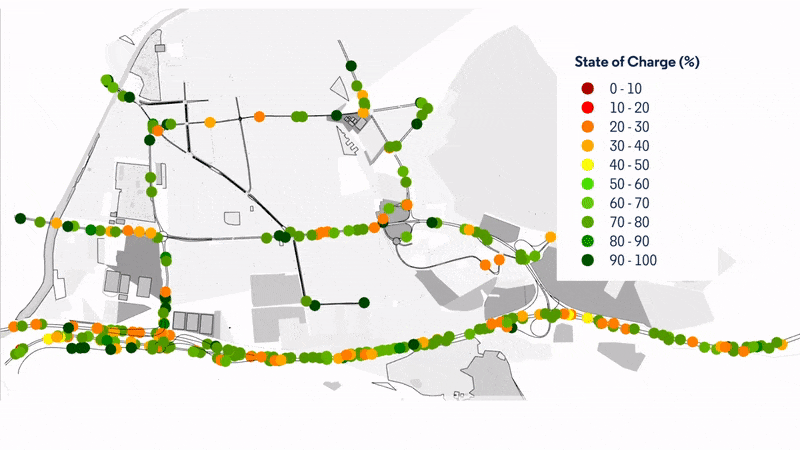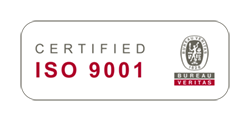- Solutions
- Innovation
- Software
Get Aimsun Next
Use Aimsun Next
About Aimsun Next
- About
Aimsun Next About Aimsun Next Overview
Aimsun Next Overview
Aimsun Next is an all-in-one approach to mobility modeling, providing a single, united network representation of how people move in any mode, on any scale.

Aimsun Next Overview
Aimsun Next is an all-in-one approach to mobility modeling, providing a single, united network representation of how people move in any mode, on any scale.


Integrated modelling
Aimsun Next harmonizes, in one package, all levels and methodological approaches to transportation modeling:
• Microscopic simulation and analysis (including pedestrians, bikes, and vehicles with non-lane-based behavior)
• Mesoscopic simulation and analysis
• Macroscopic assignment and analysis
• Hybrid meso–micro schemes
• Hybrid macro–meso schemes
• Classic four–step travel models
• Static transit assignment
• Dynamic transit assignment
Aimsun Next can respond to the complexity or simplicity of any project and comes with an extensive toolkit of built-in features. What’s more, it can be further enhanced and extended with Python scripts, APIs, software toolkits, and it connects to external systems as and when needed. So, while it is an excellent tool by itself, it is also a gateway to even wider possibilities, collaborations, and sophisticated approaches to modeling goals.
What are the benefits of integrated simulation?
Use the right tool for your project, without the hassle of moving from program to program
Build extensible models at any scale
Work free from tedious, error-prone manual interfacing between different software packages
Reduce your administrative and maintenance costs and stop churning your organization’s expertise
Consolidate data collection and manipulation: use one set of real data you can filter as necessary
Work in parallel as a team on the same model using our Revisions feature
Save revisions separately and merge them into the base model as and when required
What does Aimsun Next do best?
The applications are virtually infinite, but here are some of the things that Aimsun Next does best in three major areas:
• Evaluating new infrastructure proposals without incurring real-world costs and disruption
• Managing transportation needs for large-scale events
• Mapping out and testing new pedestrian areas
• Optimizing transit signal priority (TSP) strategies
• Managing the impact of roadworks and work zones on traffic usage
• Simulating connected and automated vehicles
• Testing ‘smart city’ initiatives
• Analyzing battery consumption of electric vehicles
• Testing variable-speed policies and other traffic management actions
• Modeling intelligent transportation systems (ITS) and cooperative intelligent transport systems (C-ITS)
• Testing and comparing proposals for transport upgrades or developments
• Producing the inputs for cost–benefit analyses of new infrastructure or services
• Modeling current and future highway schemes
• Conducting feasibility studies into high-occupancy-vehicle (HOV) and high-occupancy-toll (HOT) lanes
• Running environmental impact studies
• Studying the effect of tolls and road pricing
• Modeling network operations that might impact route choice, such as parking schedules, turn closures or reversible lanes
• Analyzing the safety levels of infrastructure, changes, and strategies
• Testing networks against Highway Capacity Manual (HCM) guidelines
• Evaluating travel demand management (TDM) strategies
• Testing the impact and feasibility of bus rapid transit (BRT) schemes
Why should I choose Aimsun Next over other software packages?
Efficiency
Simulate different traffic strategies using one model, geometrical alternatives, different demands, different transit arrangements, and a broad range of strategies, policies, and triggers that react to time or network conditions.
Modeling sustainability
The Aimsun Next Battery Consumption Model shows the performance of electric vehicles’ energy consumption. We have also streamlined our models to consider all vehicle engine types and to work smoothly together across our five environmental models, which include the emissions models: QUARTET, Panis et al., and the London Emission Model (LEM) plus two energy-related models: the Fuel Consumption Model and the Battery Consumption Model.
Climate concerns also mean a crucial role for transit systems and non-motorized vehicles. Aimsun Next has flexible traffic management strategies for transit-route detours, and we continue to fine-tune our models for bikes and non-motorized vehicles with new, reactive parameters for more realistic behavior.
Intuitive model builds
Vehicle conflicts are generated automatically, based on the geometry of the network. Performance and behavior parameters are stored within roads, lanes, and vehicle types, which allows for consistency across the board as well as discrete ‘surgical’ changes wherever needed. These parameters can be stored in a template for your team or organization to use.
Meet tight project deadlines
Split and share a project among colleagues by using model revisions: one modeler can work on the meso area, another modeler can work on the micro subnetwork, and a third modeler can work on signal controls. All their revisions can be compared, saved separately, and merged back into the main project file by the lead modeler. This method can reduce model-building time and it means that you can run different studies in parallel rather than sequentially.
True integration
Aimsun Next seamlessly integrates all traffic and pedestrian models, at all levels of granularity, in a single program. This is our USP and presents an exceptional advantage when you need to combine strategic and operational tasks and want this to come with the free exchange of data. One quick example would be transferring path-assignment results from a macroscopic model to a microscopic model. With Aimsun Next, this kind of multi-layered flexibility has never been easier.
Large-scale models
Aimsun Next is perfect for large-scale modeling tasks, and is especially user friendly for working with traffic demand, transit assignments, splitting and joining zones, creating more accurate ‘warm-up’ traffic states, and providing customizable analytical outputs.
Flexibility and accuracy
Combine different types of paths, generated with different algorithms, to simulate more representative behavior and to analyze non-recurrent conditions like scheduled events and incidents.
Extensible and cooperative
Aimsun Next incorporates Python scripts, APIs, software toolkits, working links with external traffic systems, autonomous vehicle environments, and compatibility with the formats of all relevant programs in the field.
Non-lane-based modeling
Aimsun Next has a built-in pedestrian simulator and can also handle the movement of motorbikes, bicycles, rickshaws, and all vehicle types that tend toward non-lane-based behavior.
Integrated signal simulation
Simulated signals in Aimsun Next models can be fully integrated with leading systems, including LISA, SCATS, SCATS ITS, SCATS-RMS, Siemens UTC System (with SCOOT), Sitraffic Office, UTOPIA, and vs|plus.

